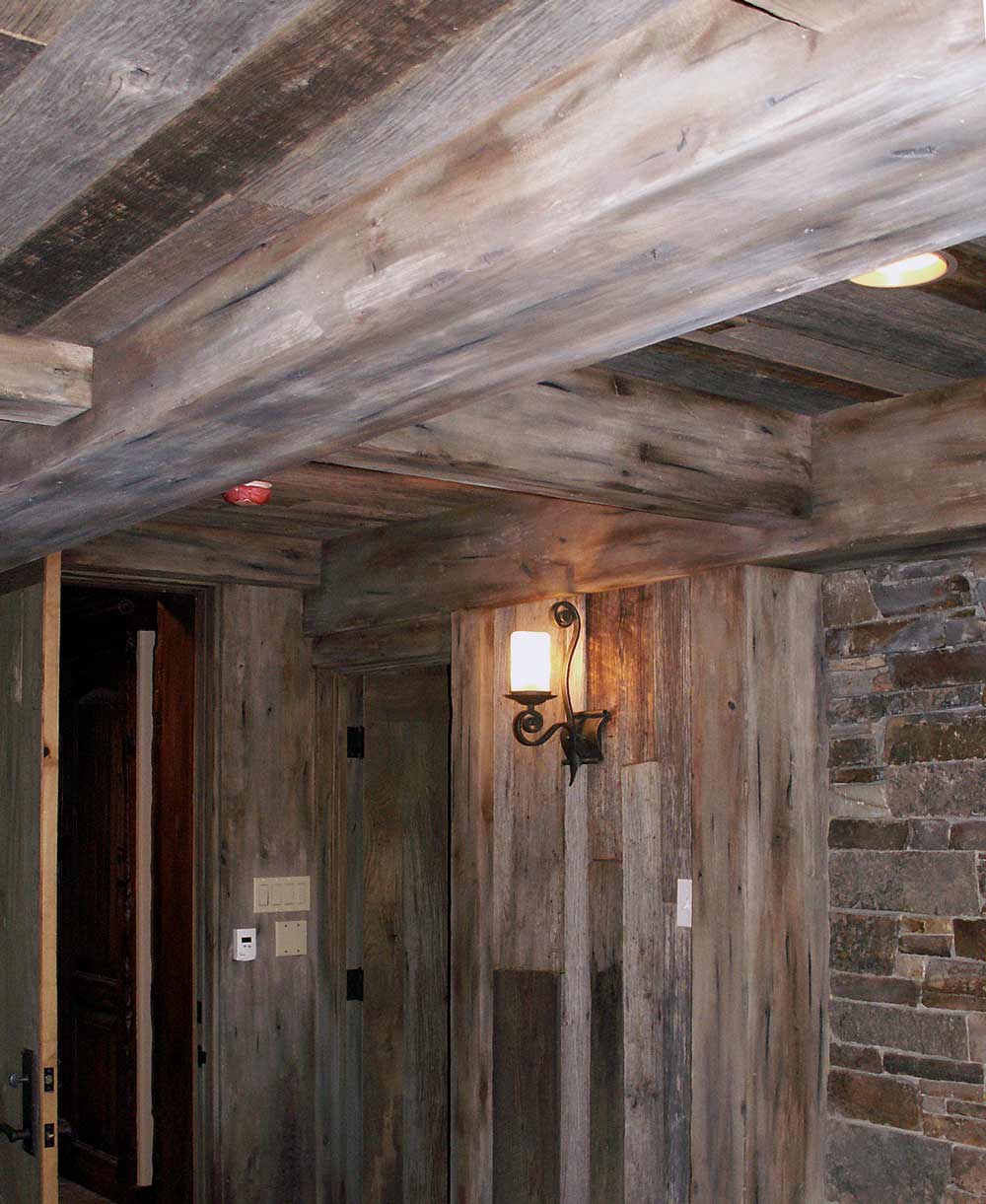Neutralizing a Vat-Stripped Door
what to do? November 27, 2007
Question
A customer has sent me a couple of reclaimed doors that they plan to use in their new home, still under construction. One is an old cypress 3-panel job that has obviously been vat-stripped. Since my main line is high-end cabinets and custom furniture, this is new territory.
Is there any cleaning or neutralizing step required before I apply a finish? Although the door was stripped well over a year ago, a little stripper is still leaching from some of the joints, especially around the panel edges. Finally, although I haven't met with the decorator, my guess is this project will likely involve a water-based finish, since the whole house is designed around a sustainable/green concept, and VOCs are a concern. Any special precautions needed here to insure adhesion? Any tips greatly appreciated.
Forum Responses
(Finishing Forum)
From contributor K:
When you say stripper is leaching, do you mean it is wet? Where has it been stored? As far as neutralizing, that should have been done by the vat stripper. Otherwise, oxalic acid is what they used to use for neutralizing. Rinse very well. Let dry for a few weeks and sand. Seal with SealCoat or Target's water-based shellac.
From contributor B:
Vat stripping typically uses lye (sodium hydroxide, I believe it is). This has to be rinsed off or out of pores as thoroughly as possible and then neutralized with vinegar. What is seeping out is probably that chemical. I would power wash again and neutralize, dry, and sand for prepping to finish.
From the original questioner:
It's been stored in a garage in the (low humidity) Texas Hill Country for well over a year, yet there is clearly some ongoing squeeze out in spots, mostly around the panel edges. I would have expected this to dry long ago.
From contributor B:
No, not necessarily. If it's still in the wood, moisture will reactivate. That's the reason for neutralizing - so this doesn't happen while the finish is on, which would lift or deteriorate the finish.
From contributor D:
I agree with contributor B's advice. The door most likely was "hot-tanked" in lye, and was not neutralized. Use vinegar, because that will help to balance the PH of the wood. Otherwise, down the road, finish will fail.
From contributor K:
The only reason I said oxalic is that I had a friend in the business in the 80's and he tank-stripped thousands of doors and always used oxalic for the neutralizer. But of course, vinegar works fine also.
From contributor D:
My understanding was that oxalic acid was used to brighten or lighten the wood that got darkened by the caustic stripper - not to neutralize it. The acidic acid did that.
From contributor O:
The oxalic is used to bring the wood back to color. Lye (sodium hypochlorite) will gray most woods as if they have been left out in the weather. I am no chemist, so I cannot say for sure if there is any PH shift when it is dipped in the oxalic acid. It is a good idea to use vinegar to neutralize prior to coating the wood, but I admit that there have been many times over the years when I was forced to work on vat dipped objects that were not done with vinegar, and no problems showed up later. With your door, it is very strange that you are getting seepage and bleeding after so long. My gut tells me to re-strip it with a standard mc stripper before continuing, for several reasons, one of which is to re-clean the surface. I would also wash it with lacquer thinner.
From contributor U:
The stripping process uses a concentrated solution of sodium hydroxide (NaOH), which saponifies oil-based coatings. It won't work on acrylics to any great extent. The problem is that the item is left in the tank until the paint slides off, but the wood becomes saturated with the solution. Let it dry out and the NaOH is deposited as crystals within the timber. But the product is hygroscopic (drawn to water), so you get efflorescence crystals appearing on the surface in damp weather. Wiping with vinegar (or any acid for that matter) will neutralize the alkaline hydroxide, but won't get all of it.
Once the door is coated, there shouldn't be a problem, unless it is hung in a damp environment (bathroom, shower room, outside). Salt may continue to effloresce and, if finished with an oil-based formulation, blistering of the coating can occur as the hydroxide attacks the coating from the back.
From contributor O:
Oops, sorry - I misstated sodium hydroxide as sodium hypochlorite. Lye/caustic soda is sodium hydroxide and chlorine bleach is sodium hypochlorite.
From contributor G:
What contributor U said. One of George Franks' stories was about a hypochlorite bleached elm bed that wept after it was built. A few years ago when I was selling tank stripper, it was methylene chloride based product. Has that been banned now?
From contributor C:
As contributor U said, the lye saponifies - that's "turns to soap" - the oil-based coating on the door. I suspect that the soap gets re-absorbed by the door if the stripping solution is not washed off properly. I have had similar problems with vat-stripped doors having damp patches that never dry out. The only solution is to keep scrubbing and rinsing the affected areas until no more soap suds appear.
